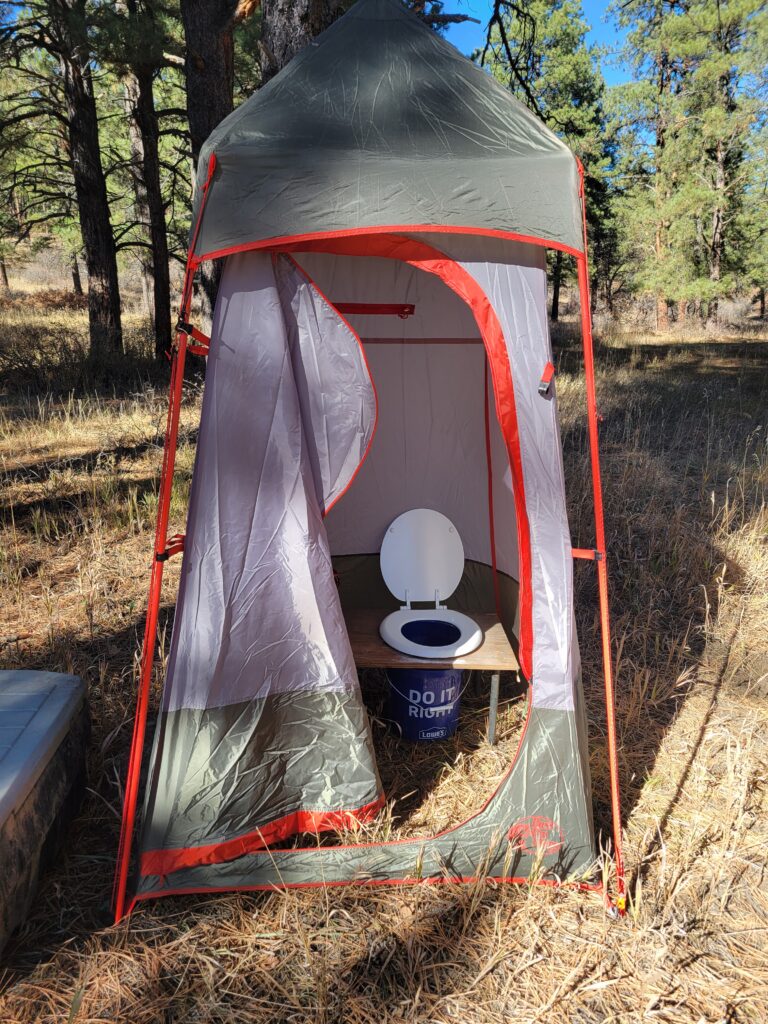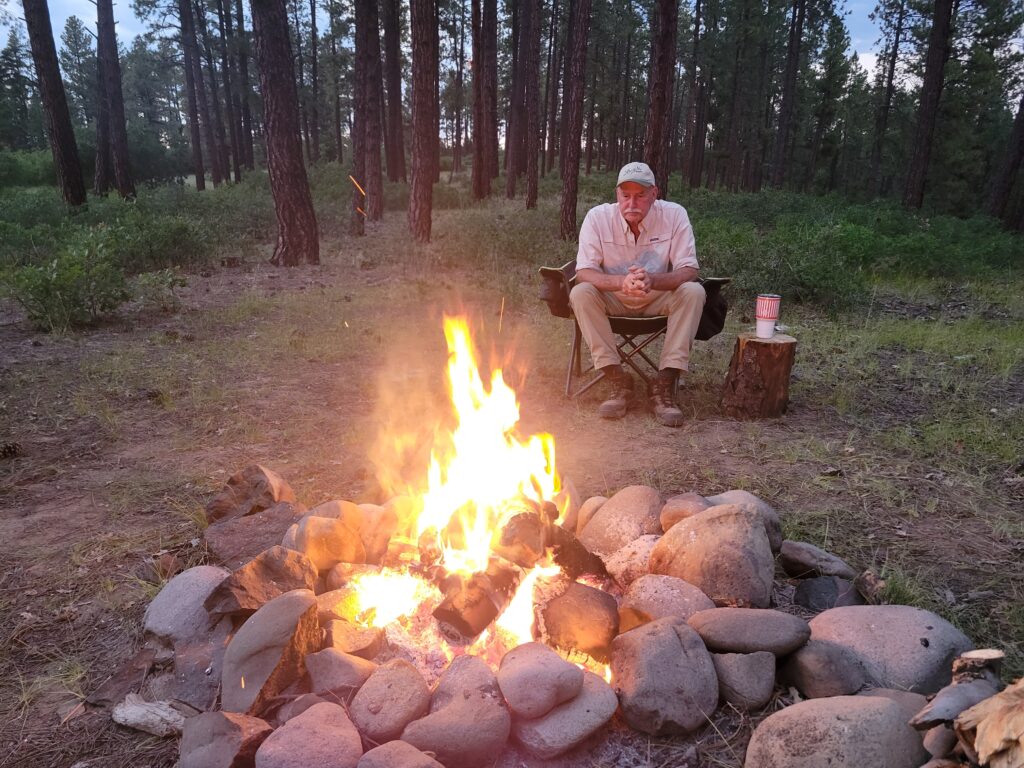Contents
- 1 The Essence of the 7 Leave No Trace Principles
- 2 Leave No Trace Principle 1: Plan Ahead and Prepare
- 3 Leave No Trace Principle 2: Travel and Camp on Durable Surfaces
- 4 Leave No Trace Principle 3: Dispose of Waste Properly
- 5 Leave No Trace Principle 4: Leave What You Find
- 6 Leave No Trace Principle 5: Minimize Campfire Impacts
- 7 Leave No Trace Principle 6: Respect Wildlife
- 8 Leave No Trace Principle 7: Be Considerate of Other Visitors
Leave no trace eco-friendly camping is more than just a trend; it’s a responsibility. Camping is one of those simple pleasures that connects us back to nature. It’s about leaving the chaos of everyday life behind and enjoying the tranquility of the great outdoors. But to keep these sanctuaries pristine, it’s critical to think about the impact we leave behind each time we venture out.
QUICK LOOK: 7 Eco-Friendly Leave No Trace Camping Principles
- Smart planning is the backbone of any successful camping trip. The first Leave No Trace principle emphasizes the importance of preparation to mitigate unforeseen challenges and environmental impacts.
- Camp on durable surfaces like maintained trails, designated campsites, rock, gravel, sand, dry grasses, or even snow. Using these surfaces helps concentrate our impact, ensuring that ecosystems stay intact and healthy.
- Proper waste disposal. Starting with the ‘pack it in, pack it out’ philosophy, make sure all trash, leftover food, and litter are carried out with you.
- Observing the ‘Leave What You Find’ principle not only protects the history and geology of the places we visit but also promises the same unspoiled experiences for future adventurers.
- Monitor and Manage Your Campfire: While campfires can provide warmth and comfort, they can also cause lasting damage if not managed correctly.
- Respect Wildlife: It’s imperative to admire wildlife from a respectful distance to ensure their safety and ours. Approaching, feeding, or trying to follow animals can lead to stress and unnatural behaviors, which is why distance is key.
- Be Considerate of other Campers: Sharing the outdoors with others is one of its greatest joys, but it requires a certain level of etiquette and awareness. Respecting fellow explorers not only enhances their experience but enriches yours as well.
The Leave No Trace principles have been around for quite some time, offering a clear roadmap to minimize our environmental footprint while camping. Developed by the Leave No Trace Center for Outdoor Ethics and informed by years of research, they’re rooted in the idea that everyone can enjoy nature responsibly.
The central idea is fairly straightforward: reduce your impact as much as possible so that future generations can enjoy these beautiful places too. Every little action counts, from how we prepare for our trips to the way we act when immersed in nature.
Embracing eco-friendly camping not only ensures the protection of these natural spaces but also enriches our own experiences by fostering a greater connection to the world around us. When you set out with eco-friendly intentions, you’re safeguarding habitats, protecting wildlife, and preserving the beauty of nature.
It’s not just about following rules; it’s about cultivating an ethic of stewardship and respect for the land. Whether you’re a seasoned camper or heading into the wilderness for the first time, these practices offer guidance to integrate sustainability into every outdoor adventure.
The Essence of the 7 Leave No Trace Principles
The 7 Leave No Trace Principles might just be the compass you need for ensuring low-impact adventures. These guiding rules are designed to help anyone visiting the outdoors make informed, responsible decisions. They come packed with expert insights updated continuously by biologists and outdoor educators to reflect the latest in ecological research and ethics.
Each principle has its own focus, offering practical advice that can be adapted whether you’re trekking through remote wilderness, exploring local parks, or setting up camp in your own backyard. Think of them as your outdoor ethics toolbox, easily accessible and ready to guide your actions, wherever you are.
Adhering to these principles is about more than just following a checklist. It’s an opportunity to engage deeply with nature, make conscientious choices, and leave your camping spots better than you found them. They’re about showing that respect for nature by taking personal accountability for our actions, which in turn creates a positive ripple effect on the environment and other outdoor enthusiasts.
While the rules provide detailed guidance, they also empower you to evaluate the landscape and make decisions that honor the unique needs of every location. By incorporating these principles into each adventure, you contribute to the preservation of these precious natural spaces, ensuring that they remain pristine for many more to enjoy.
Leave No Trace Principle 1: Plan Ahead and Prepare
Smart planning is the backbone of any successful camping trip. The first Leave No Trace principle emphasizes the importance of preparation to mitigate unforeseen challenges and environmental impacts.
- Knowing the area you’re heading to—its regulations, weather patterns, and specific concerns—sets the stage for a seamless and eco-friendly adventure.
- Packing strategically can lessen waste and simplify your journey. Consider repackaging food to cut down on packaging waste and bring only what you need. This not only minimizes litter but also makes packing out easier.
- Maps and GPS devices help navigate without needing to leave markers that disrupt the natural setting.
- Timing your trip to avoid high-traffic periods is more than just a personal benefit; it plays a part in reducing impact on trails and campsites. Large groups particularly benefit from this, as splitting into smaller factions can lower the strain on eco-systems.
- Researching and preparing for potential weather extremes and emergencies ensures you’re not caught off guard, preserving both safety and the environment.
By dedicating some time to meticulous planning, you’re not just protecting the spaces you enjoy but also enriching your own outdoor experience. This thoughtful consideration lays the groundwork for adhering to the subsequent Leave No Trace principles effectively.
Leave No Trace Principle 2: Travel and Camp on Durable Surfaces
When it comes to minimizing your footprint, choosing where you travel and set up camp is crucial. Durable surfaces are places like maintained trails, designated campsites, rock, gravel, sand, dry grasses, or even snow. Using these surfaces helps concentrate our impact, ensuring that ecosystems stay intact and healthy.
- In well-trodden areas, sticking to established trails and campsites is the best move. This keeps ecosystems from wide-reaching disruption and keeps vegetation knocking at nature’s door. No matter if the trail’s muddy or dry, walking single file maintains its intended path and prevents broad damage.
- On the flip side, pristine areas require us to tread lightly. Here, dispersing use and avoiding newly forming campsites preserves the naturalness of these settings. It’s all about finding campsites as they are, rather than reshaping nature to fit our needs.
- Remember that a good campsite is found, not made. Rather than altering a spot to suit your needs, adapt to what’s available. This respects the environment and ensures future campers can experience its untouched beauty.

Practicing these travel and camping methods respects wild environments, maintaining their integrity and natural charm. It’s a simple shift in choice, but its positive impact on nature is substantial.
Leave No Trace Principle 3: Dispose of Waste Properly
One of the simplest yet most effective ways to preserve the natural beauty of outdoor spaces is through proper waste disposal. Starting with the ‘pack it in, pack it out’ philosophy, make sure all trash, leftover food, and litter are carried out with you. After all, no one wants to stumble upon someone else’s garbage while seeking solitude in nature.
- Using established toilet facilities is always the best option for dealing with human waste. If those aren’t available, digging catholes at least 200 feet from water sources and trails is the way to go. These should be roughly 6 to 8 inches deep, and once used, carefully covered and camouflaged to avoid the spread of waste.
- Packing out toilet paper and hygiene products is non-negotiable. While it might seem tempting to dispose of them in a cathole, taking them out ensures complete preservation of the environment.
- Dishwashing in the wilderness poses its own challenges. The key here is to carry water away from streams or lakes (again, that 200-foot rule) to wash oneself or dishes. Using only small amounts of biodegradable soap and scattering the strained dishwater minimizes any ecological impact, leaving nature as you found it.

Proper waste management not only protects the landscapes we cherish but also safeguards wildlife, water sources, and the general vibe of untouched nature. It all comes down to this: if you brought it in, you can definitely bring it back out.
Leave No Trace Principle 4: Leave What You Find
Preserving the character and integrity of natural spaces means leaving everything as you found it. This concept encourages us to appreciate and enjoy the beauty of nature without altering it.
- Whether it’s ancient artifacts, unique rocks, or vibrant wildflowers, our role is to observe and appreciate without taking or changing. By leaving rocks, plants, and other natural items undisturbed, we’re doing our part to maintain the subtle balance within these ecosystems. Removing natural objects, no matter how small, can disrupt habitats and hinder natural processes.
- An often-overlooked aspect is the introduction of non-native species. It’s vital to avoid transporting these potentially disruptive organisms, which can hitch a ride on boots, clothes, or gear. Check and clean equipment before and after trips to prevent any unwanted introductions.
- Creating structures or trenches might seem like harmless fun, but they leave lasting marks on the landscape. Instead, embrace the surrounding environment as it is and challenge yourself to enjoy the wild in its natural state.
Observing the ‘Leave What You Find’ principle not only protects the history and geology of the places we visit but also promises the same unspoiled experiences for future adventurers.
Leave No Trace Principle 5: Minimize Campfire Impacts
Few things are as iconic as a campfire, but they come with significant environmental responsibilities. While campfires can provide warmth and comfort, they can also cause lasting damage if not managed correctly.
- Wherever possible, opt for a lightweight camping stove for cooking. It’s a cleaner approach that leaves no trace.
- Where fires are permitted, use established fire rings, fire pans, or mound fires. This minimizes the marks left on the landscape and ensures that future campers experience the area as nature intended.
- Keep campfires small and controlled, using only downed and dead wood that can be broken by hand. This approach ensures minimal disruption to the forest floor and preserves the firewood resources that many wildlife species rely on for habitat.
- Burn all wood and coals to ash and be diligent in extinguishing the fire completely before scattering the cool ashes. Even smoldering embers can start unexpected fires, impacting more than just the immediate area.

Respecting the ‘Minimize Campfire Impacts’ principle helps in preserving the natural aesthetics and ecological health of our favorite camping spots. It allows fires to enhance the experience rather than detract from it, all while keeping the wilderness intact for others to enjoy.
Leave No Trace Principle 6: Respect Wildlife
The allure of wildlife encounters is without a doubt one of the most exciting parts of outdoor adventures.
- Yet it’s imperative to admire these creatures from a respectful distance to ensure their safety and ours. Approaching or trying to follow animals can lead to stress and unnatural behaviors, which is why distance is key.
- Feeding wildlife isn’t just ill-advised; it can lead to serious repercussions for animal health and can drastically alter their natural behaviors. They might become dependent on human food, increasing their risk of disease and predation. It’s crucial to store food and waste securely, preventing curious animals from getting a taste of something they shouldn’t.
- If you bring pets along, keep them under control at all times or consider leaving them at home. Pets can disturb wildlife and their habitats, not to mention the risk they might pose in tempting wild animals closer to humans.
- During sensitive periods like mating, nesting, or raising young, educational awareness is vital in maintaining a respectful distance from wildlife habitats. Regulations during these periods are set to protect these animals during their most vulnerable times.
By showing wildlife the respect they deserve, we not only contribute to their well-being but also improve the quality and authenticity of our own interactions with nature. It’s all about coexisting peacefully in these shared spaces.
Leave No Trace Principle 7: Be Considerate of Other Visitors
Sharing the outdoors with others is one of its greatest joys, but it requires a certain level of etiquette and awareness. Respecting fellow explorers not only enhances their experience but enriches yours as well. It’s about creating a harmonious environment where everyone feels welcome and respected.
- Being courteous on trails is a simple yet powerful practice. Yield to others when necessary and always be aware of your surroundings. When encountering pack animals or large groups, stepping to the side and giving way shows respect and cooperation.
- Choosing campsites away from trails and other campers not only respects their space but also adds to the solitude and peace of your own adventure. This small act of consideration maintains a natural soundscape, allowing nature’s music to prevail.
- Keeping noise levels down is another crucial aspect. Loud voices and disruptive sounds can overpower the serenity that makes outdoor experiences special. Allow nature’s tranquillity to be the backdrop to your adventure, offering a more immersive experience for everyone.
- Consideration extends beyond interactions—it’s about preserving the overall experience, ensuring that everyone can find their little slice of wilderness bliss. This principle of respect and awareness helps nurture a community of conscientious outdoor enthusiasts.
Check Out These Latest Camping Articles:
- 5 Things To Look For In A Backpacking Sleeping Bag

- 10 Tips for Delicious And Easy Camping Meals

- Camping With Kids: Fun Activities And 7 Tips For A Successful Trip

- Top 10 Most Scenic Camping Spots In The US

- Essential Gear For First-Time Campers

- 7 Wilderness Knots Every Outdoorsman Should Know

As always, stay safe, enjoy the journey and please try to leave it cleaner than you found it and leave no trace. If you have any comments, questions, ideas, or suggestions please leave them in the comment section below and I’ll get back to you ASAP. You can follow us on YouTube: Man Art Creations for videos of our DIY Adventures.
P.S. – Thanks so much for checking out our blog we really appreciate it. Just so you know, we may receive a commission if you click on some of the links that appear on our site. This helps us keep our content free and up-to-date for everyone. We appreciate your support!



